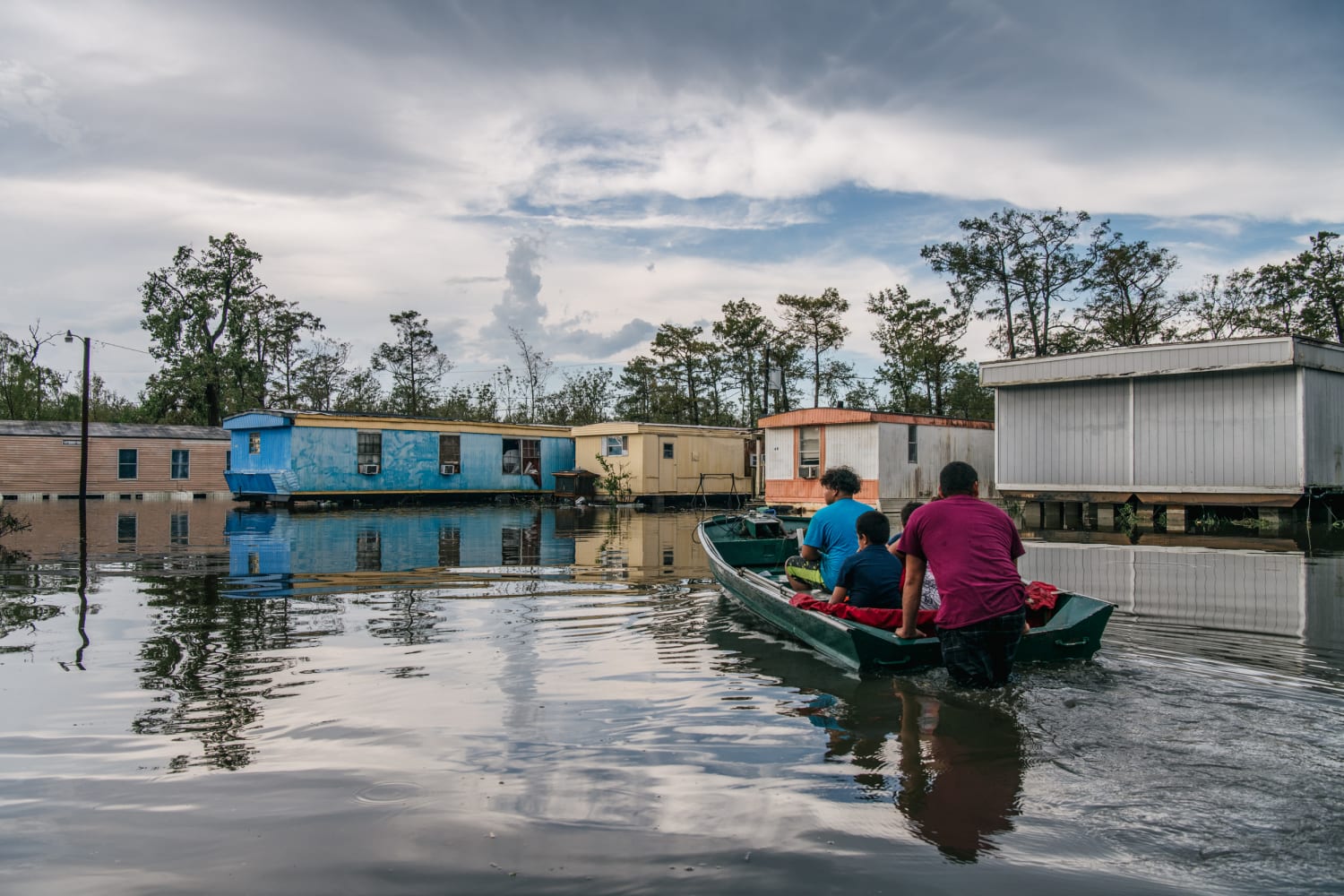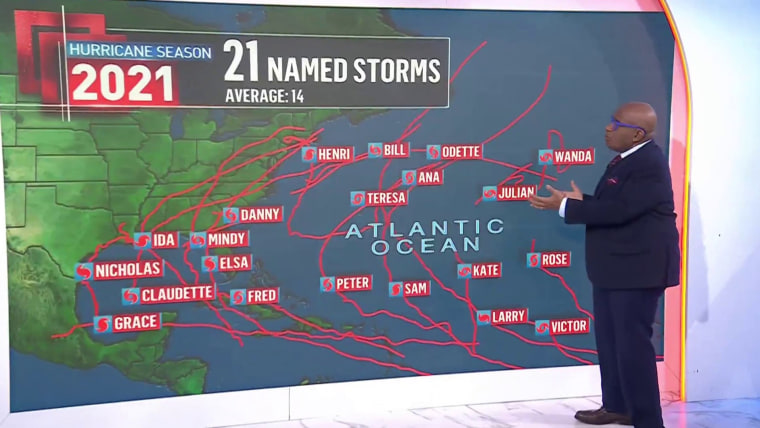There was a collective sigh of relief Tuesday as the Atlantic hurricane season officially came to an end.
Although tropical systems can occur outside the official season, which runs from June 1 to Nov. 30, the likelihood is very low as the Northern Hemisphere transitions into the winter season.
This year marked the sixth straight above-average hurricane season, making for a record stretch of hyperactive tropical activity. The final count of tropical cyclones came to 21 named storms, compared to an average of 14 named storms a season; seven hurricanes, which is average; and four major hurricanes, whereas the average is three major hurricanes.
With 21 named storms, 2021 became just the third season in history to exhaust the regular list of names. The other two occurred in 2005 and 2020.
The most legendary hurricane of the 2021 season will be Hurricane Ida, one of the most accurately forecast hurricanes in recent history. Several days out, forecast models were in consensus with a high likelihood of a rapidly intensifying, major hurricane striking the Louisiana coastline.
Ida made landfall Aug. 29 near Port Fourchon, Louisiana, as a 150-mph Category 4 hurricane, tying 2020’s Laura and the Last Island hurricane of 1856 as the strongest to ever strike the state.
It occurred on the 16th anniversary of the 2005 Hurricane Katrina.
The highest wind gust was 172 mph recorded near Port Fourchon. New Orleans experienced wind gusts up to 90 mph, which knocked out power to the entire city. More than 1 million customers lost power in Louisiana alone.
After slamming Louisiana, Ida’s remnants moved up into the Northeast, spawning destructive and deadly flooding across portions of Pennsylvania, New Jersey and New York.
New York City picked up 3.15 inches of rain in one hour. This broke the record for wettest hour ever in the city, turning roads into rivers and subway stations into waterfalls. Dozens of people died, most of them trapped in basement apartments or inside vehicles.
Ida came after Tropical Storm Henri, which made landfall the previous week, on Aug. 22, and caused record rainfall for the area.
Given the death toll and destruction left by Ida, the name will likely be retired by the National Hurricane Center and World Meteorological Organization, which make the official decision.
If retired, Ida will join the long list of other “I” named storms to be retired. Meteorologists often say, “beware the letter I,” because it has the most retired names.
Other notable storms of the 2021 season were Larry and Sam for their intensity and longevity. Both maintained major hurricane status for several days. Sam was the strongest hurricane of the season, peaking out at 155 mph, just 2 mph shy of a Category 5.
Fortunately, Sam stayed over the open Atlantic and was no threat to land.
The fingerprints of climate change were evident in several of this year’s tropical cyclones. Six of the seven hurricanes went through rapid intensification, defined as an increase of 35 mph or more in 24 hours. Ida had the most impressive rapid intensification, strengthening 65 mph in 24 hours.
The destructive flooding from heavy rainfall rates were also linked to climate change. A warmer atmosphere can hold more water, which means record rainfall rates are expected to become more frequent and more intense in the future.
The 2021 season is estimated to be the fourth costliest Atlantic hurricane season with economic losses expected to exceed $70 billion, according to Brian McNoldy, senior research associate at University of Miami’s Rosenstiel School of Marine and Atmospheric Science.
Ida and Hurricane Nicholas and Tropical Storms Elsa and Fred were all billion-dollar disasters. Ida is tied with Sandy in 2012 as the fourth costliest single hurricane in U.S. history.
Source: | This article originally belongs to Nbcnews.com










